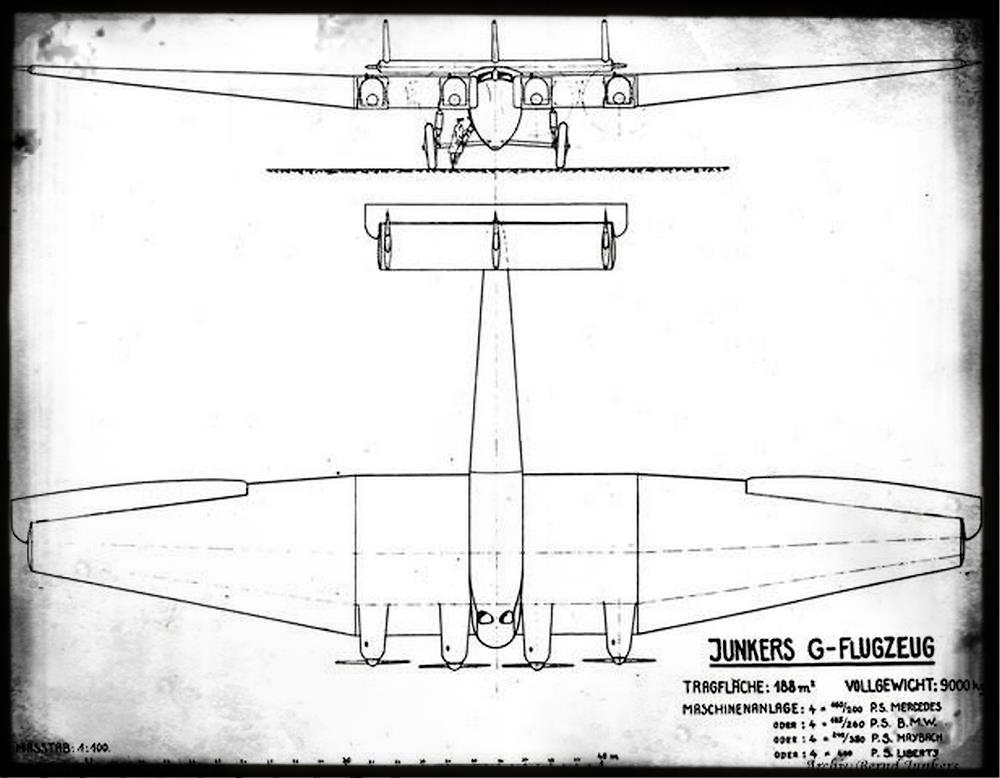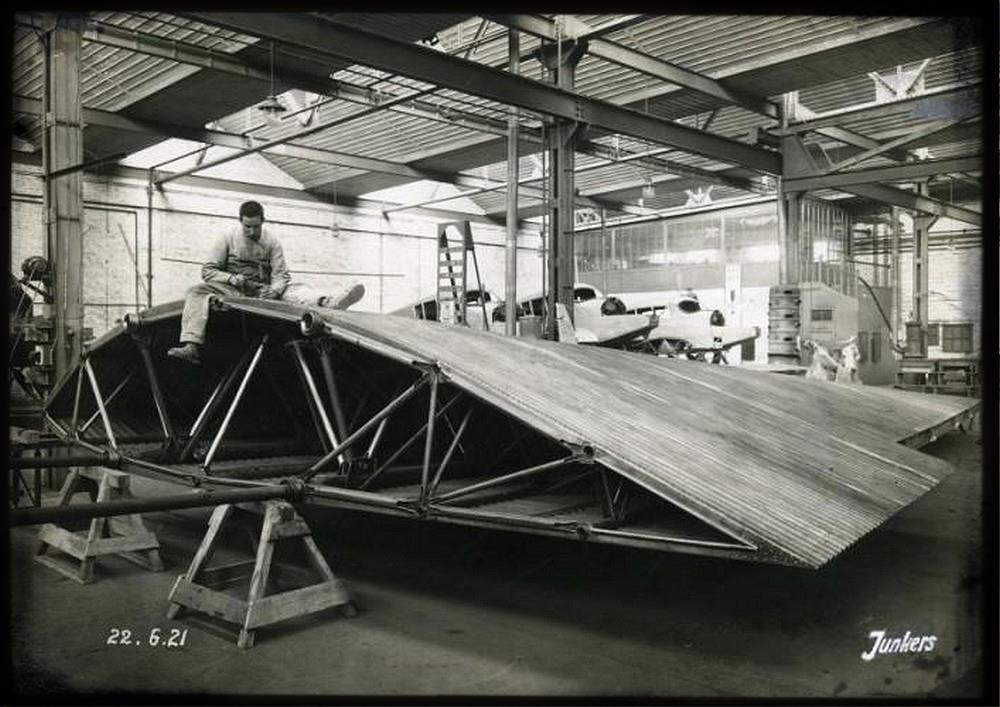Junkers JG1
see also: Junkers JG1 Production List
11 seater Large Scale Passenger Airliner, 1 built, uncompleted
developed by Junkers Flugzeugwerke, designed by Otto Reuter
Historical Background:

During World War I the German aviation industry was engaged in the developement of large aircraft, the socalled Giants. While Hugo Junkers was still experimenting with his all-metal approaches for fighter aircraft, he also headed for the idea of an all-metal Giant aircraft. Two major designs were developed in 1917 as R I and R II, but due to the end of WW I and due to less interest of IDFLIEG in all-metal giants, these designs never reached prototype status.
When the F13 design was finished, Junkers returned to the idea of a large all-metal aircraft for passenger transport purposes. The initial Junkers J14 was a ten seater Commercial airliner with a cabin of four seat rows with two seats in each row. It should have been powered by two Daimler or BMW IIIa engines with 160PS or 185 PS each. The first drawings Show a date of July 1919 for the J14. But the J14 seems to have been abandoned very early for a new four engine design.
This design was designated as JG1 of 1920. Several approaches were discussed to design a high-, mid- and cantilever monplane, but due to aerodynamic troubles, finally a highlevel monoplane was designed. The JG1 should have been equipped with four 260 PS engines, making it capable to fly with still two engines at an altitude of 1000 meters at 110 km/h. Developments of the JG1 started in summer 1920. In January 1921 the prototype construction was initiated.
The outer wing and the rear parts of the fuselage were already finished, when the Allied supervisory board discovered the JG1 during its investigations at Junkers Flugzeugwerke in the beginning of 1921. Junkers was advised to destroy these JG1 parts due to the construction limitations in Germany.

Junkers JG1 Wing Construction 1921
When the JG1 was stopped, Junkers had already designs available for a sixty seater passenger airliner, called Junkerssime in 1921. But this giant passenger liner was also abandoned, when the JG1 was stopped.
While the JG1 would have been available during late 1921/22, it would not have been the first all-metal large aircraft. This was already finished by Adolf Rohrbach with his E4/20 Staaken in September 1920. Nevertheless, Junkers returned to his large aircraft designs in 1924 with Junkers J1000 and in the late 20s with his famous Junkers G38.
It seems, that a few parts of the JG1 construction were saved, when the Allies ordered the destruction of the aircraft. Two parts of the fuselage as well as a wing section later should have been shown in the Junkers Lehrschau.
Comments about the JG1 Designator:
The designator Junkers G1 is widely used for this airliner and seems to be the correct one, regarding the later designators G23, G24 and G38 for other "Grossflugzeuge". The utilization of the designator JG1 seems to be wrong and just a later combination of J for Junkers together with the G1 designator. On the other hand all other Junkers aircraft, which entered construction phase, were numbered in continous sequence. In sofar the type number "1" is not typical for the Junkers designator system. An interesting point is also, that just a single number in the lower ranges of type numbers was not used by any Junkers aircraft type, that's the number "14", which normally must have been used in the area around 1921. Therefore it might be, that the G1 was the never mentioned J14. In that case of course the G1 consequently must have been named G14. No documents are available which show this link between G1 and J14. It might be, that the destroyment of the G1 occured to early for further publication of this designator.
Aircraft J14 1919 2xBMW IIIa (160PS) 12,90 37,60 187,50 2 pilots + 2500
year engine length
in mspan
in mwing area
im sqmnet weight
in kgpayload
in kgseats speed
in km/hrange
in km
JG 1
1921
4xBMW IV (184kW)
18,0024,30
4930
40702+8
9 pass.
200
Weblinks:
- Junkers.de - JG1 Story within Otto Reuter Section by Angelika Hofmann
- histaviation.com - Brief Story, Photos, Data
Literature:
none
introduced Jul 1996
contents last updated 21 Jun 2017

